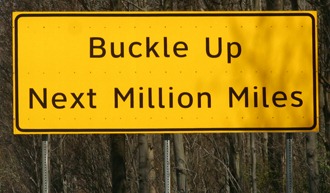Editing My Science Fiction-Part 4
Original Post: 20 June 2012
Posted Here: 4 December 2017
 I began and ended Part 3 of this series by with the caution that the critiquing process can be the most dangerous part of editing. This needs an explanation because I don’t want you to conclude that critiques should be avoided. Electricity is dangerous, too, but where would our modern world be without it? I just want you to remember that all critiques should be taken with a grain of salt.
I began and ended Part 3 of this series by with the caution that the critiquing process can be the most dangerous part of editing. This needs an explanation because I don’t want you to conclude that critiques should be avoided. Electricity is dangerous, too, but where would our modern world be without it? I just want you to remember that all critiques should be taken with a grain of salt.
The purpose of a critique is to help the writer make her story better. How much help they provide can depend on how the critic goes about his job. This is why the critique can be a dangerous part of the editing process.
The ‘big I, little you” type of person, as my dad used to call them, is one of the dangers of the critique process. I once attended a meeting of my writers group in which several of our stories were to be critiqued. One member of the group began by saying something like “There is so much wrong with this story that I don’t know where to begin.” This was not very helpful, and the young lady whose story was being critiqued never came to another meeting. I hope she is still writing, because she was a good writer. Being offensive is not the way to be helpful. It can only discourage the writer from continuing. Unfortunately, tearing someone down is the only way that many people think they can build themselves up. Learn to tune out such people. “Consider the source” is my favorite maxim here.
The other major danger of the critique is our belief that the critic must be right, so every suggestion is taken as some sort of command. Critics are fallible people with their own agendas and backgrounds. The tendency to look at critics as some sort of authority on writing can lead to several problems.
Critics often look at short stories as islands—alone in an empty sea. The story has no past or future, nothing else is happening at the same time. Critics often demand more information than is necessary for the story. Make sure the reader has all the information needed to understand the story, not necessarily all that they want (It’s your story, not theirs).
When a critic says, “I would like to see…”, what is meant is usually “I would write your story like this…” The danger here is that you might actually decide to change your story into their story. If a critic wants to write a story, that’s fine. Critics are also writers. But you don’t want them to write your story, you want to write your story. I’ve seen writers accept this “I would like to see…” suggestion and completely rewrite their story to accommodate it—and end up with a story that was nowhere near as good as the one they discarded.
Another danger is that critiquing can prevent us from seeing the forest for the trees—we see what we are reading at this instant, or what we think we are reading—and often forget what’s already been written, or refuse to hold questions in abeyance until we get to the answer a little later in the story: We can’t put 3 and 4 together to get 7, we only see the 3 or the 4. We are so close to the words that we often misinterpret the sentence, paragraph, or scene. We see what we want to see, not what’s there.
Remember, your story is your story. Take each suggestion with a healthy dash of salt. If your story needs a change for clarity or to correct an error, consider the change more seriously than if the change is just to make the story more interesting to someone else.
Keep reading/keep writing – Jack